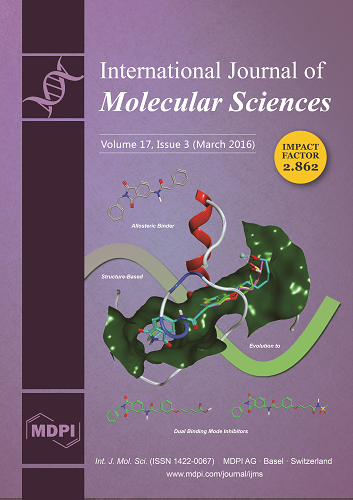Lipopolysaccharide (LPS) is a major virulence factor present in the outer membrane of
Salmonella enterica serovar Typhimurium (
S. Typhimurium). Outer membrane proteins (OMPs) from
Salmonella show high immunogenicity and provide protection against
Salmonella infection, and truncated LPS alters the outer membrane composition
[...] Read more.
Lipopolysaccharide (LPS) is a major virulence factor present in the outer membrane of
Salmonella enterica serovar Typhimurium (
S. Typhimurium). Outer membrane proteins (OMPs) from
Salmonella show high immunogenicity and provide protection against
Salmonella infection, and truncated LPS alters the outer membrane composition of the cell wall. In our previous study, we demonstrated that
Salmonella mutants carrying truncated LPS failed to induce strong immune responses and cross-reaction to other enteric bacteria, due to their high attenuation and low colonization in the host. Therefore, we plan to investigate whether outer membrane proteins from
Salmonella mutants with truncated LPS resulting from a series of nonpolar mutations, including ∆
waaC12, ∆
waaF15, ∆
waaG42, ∆
rfaH49, ∆
waaI43, ∆
waaJ44, ∆
waaL46, ∆
wbaP45 and ∆
wzy-48, affect immunogenicity and provide protection against diverse
Salmonella challenge. In this study, the immunogenicity and cross-protection efficiency of purified OMPs from all mutants were investigated to explore a potential OMP vaccine to protect against homologous or heterologous serotype
Salmonella challenge. The results demonstrated that OMPs from three
Salmonella mutants (∆
waaC12, ∆
waaJ44 and ∆
waaL46) induced higher immune responses and provided good protection against homologous
S. Typhimurium. The OMPs from these three mutants were also selected to determine the cross-protective efficacy against homologous and heterologous serotype
Salmonella. Our results indicated that the mutant ∆
waaC12 can elicit higher cross-reactivity and can provide good protection against
S. Choleraesuis and
S. Enteritidis infection and that the cross-reactivity may be ascribed to an antigen of approximately 18.4–30 kDa.
Full article






